Abstract
A microbiological safety cabinet was evaluated to determine conditions under which microorganisms might escape. Tests were conducted under three cabinet-closure conditions, various airflow velocities, and different laboratory operations, with 105, 1.1 × 105, and 106 microorganisms per cubic foot of cabinet space released per min for 5 min. The data revealed that (i) escape of a human infectious dose is possible when the cabinet is used with the glove panel off; (ii) the number of organisms that escaped from the cabinet increased with a decrease in air velocity; and (iii) an increase in the number of laboratory operations resulted in an increase in the number of organisms that escaped. Thus, when the glove panel was off, the cabinet was only safe for operations that released a small number of microorganisms into the cabinet, whereas the cabinet was safe for operations of significantly greater hazard when used with the glove panel on but with the gloves unattached.
Full text
PDF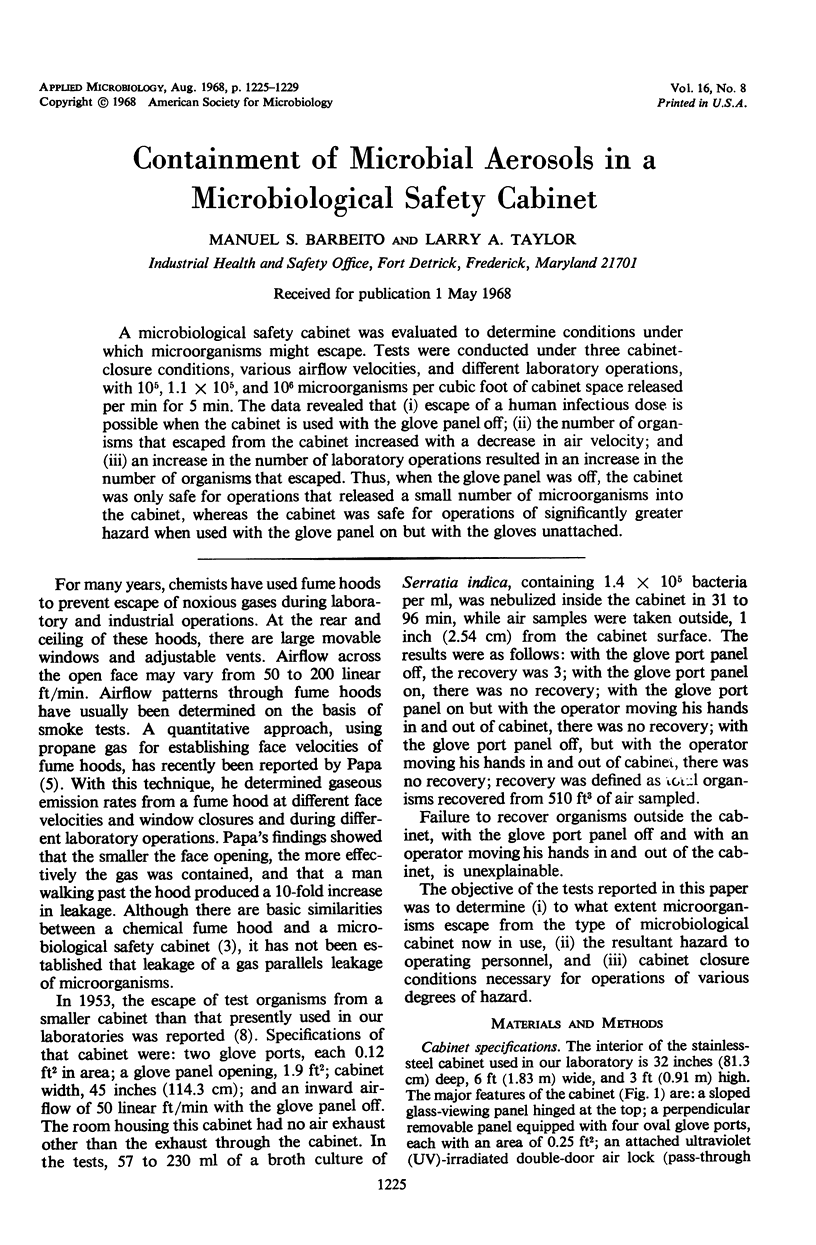
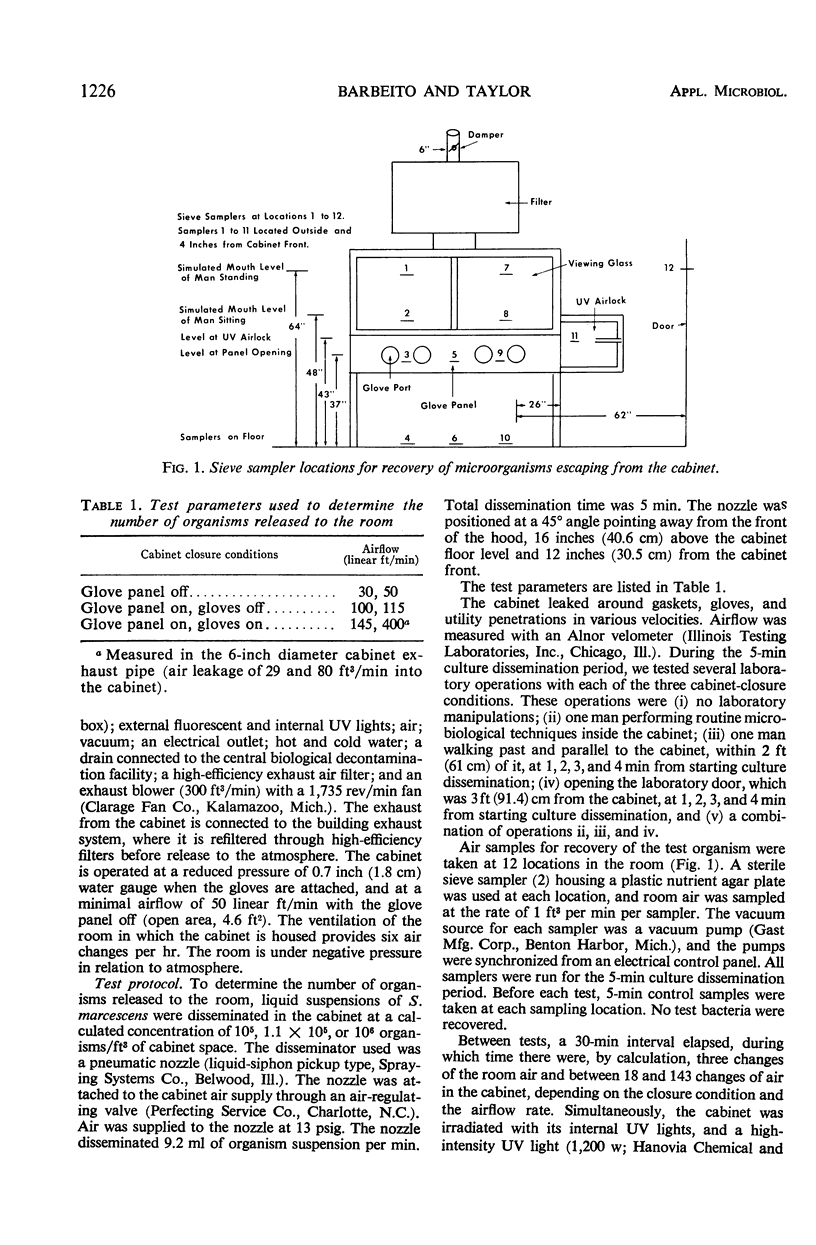
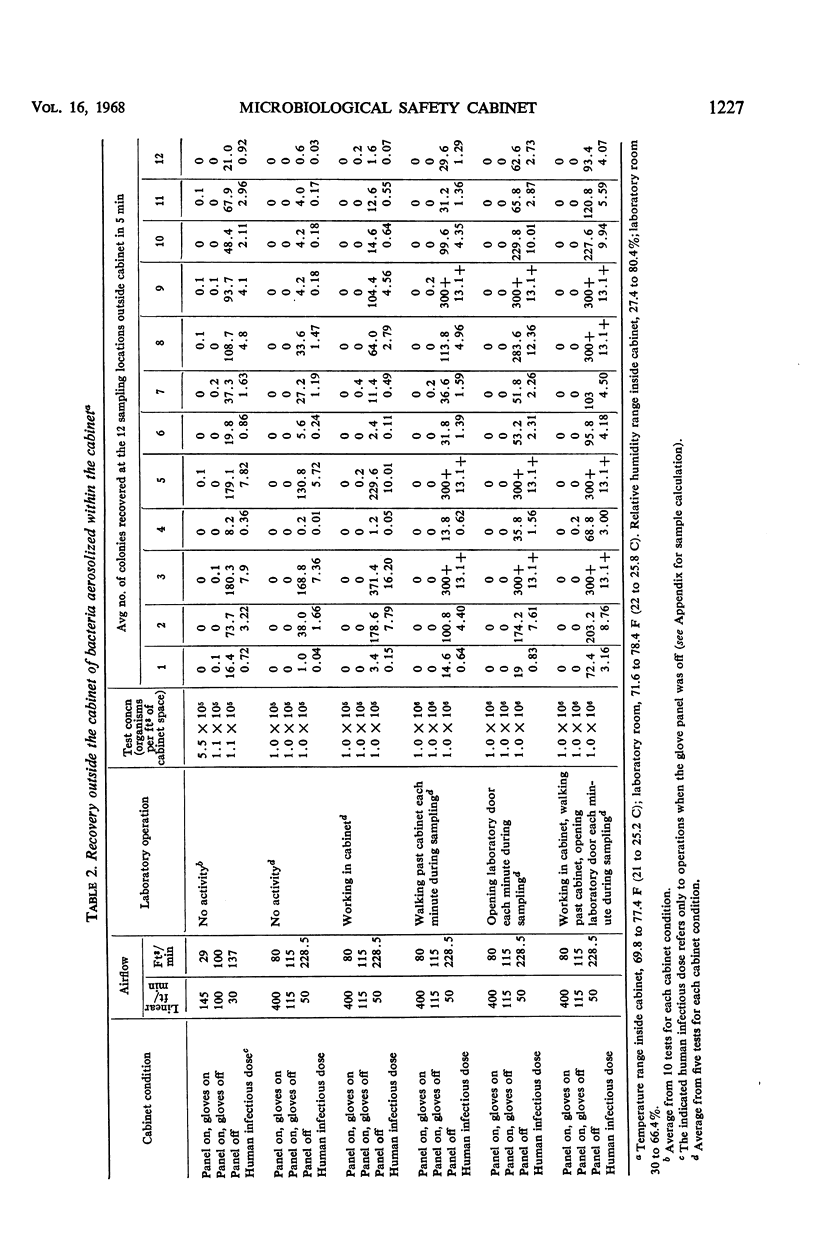
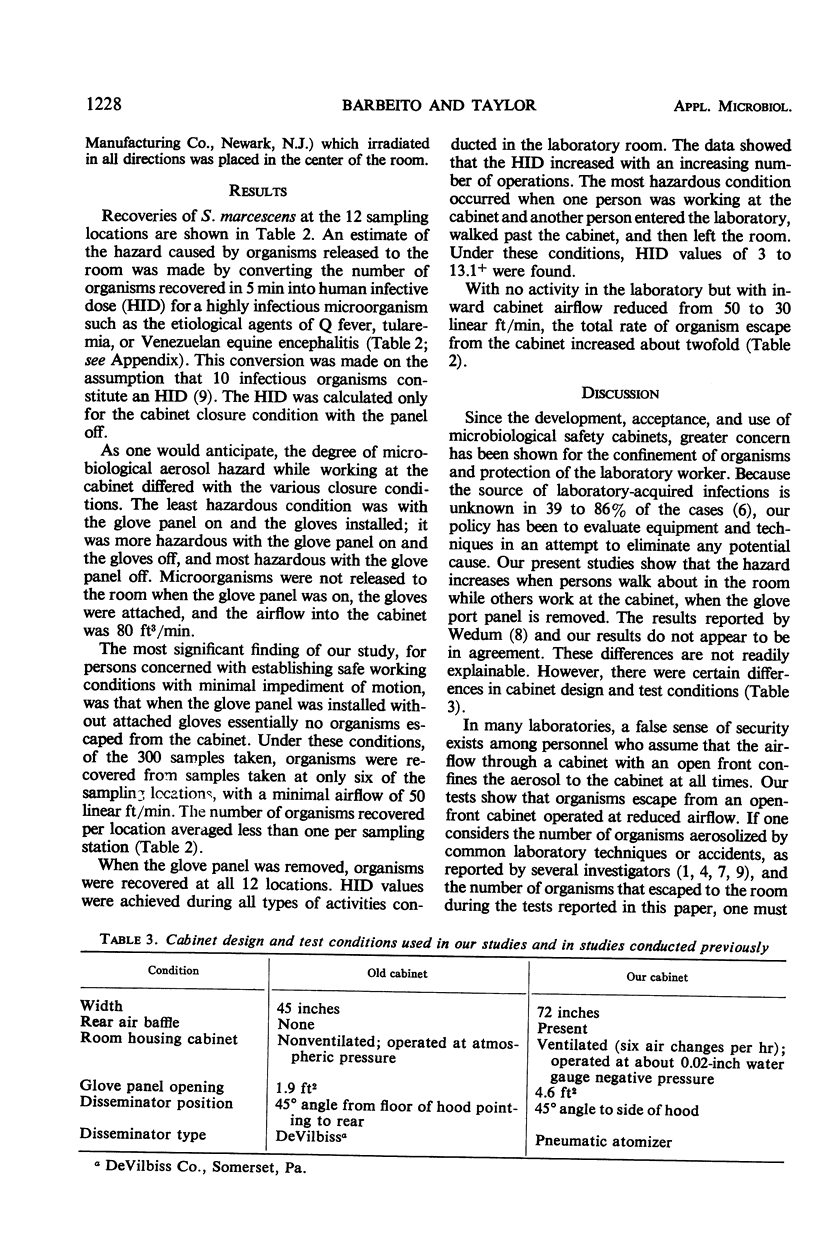
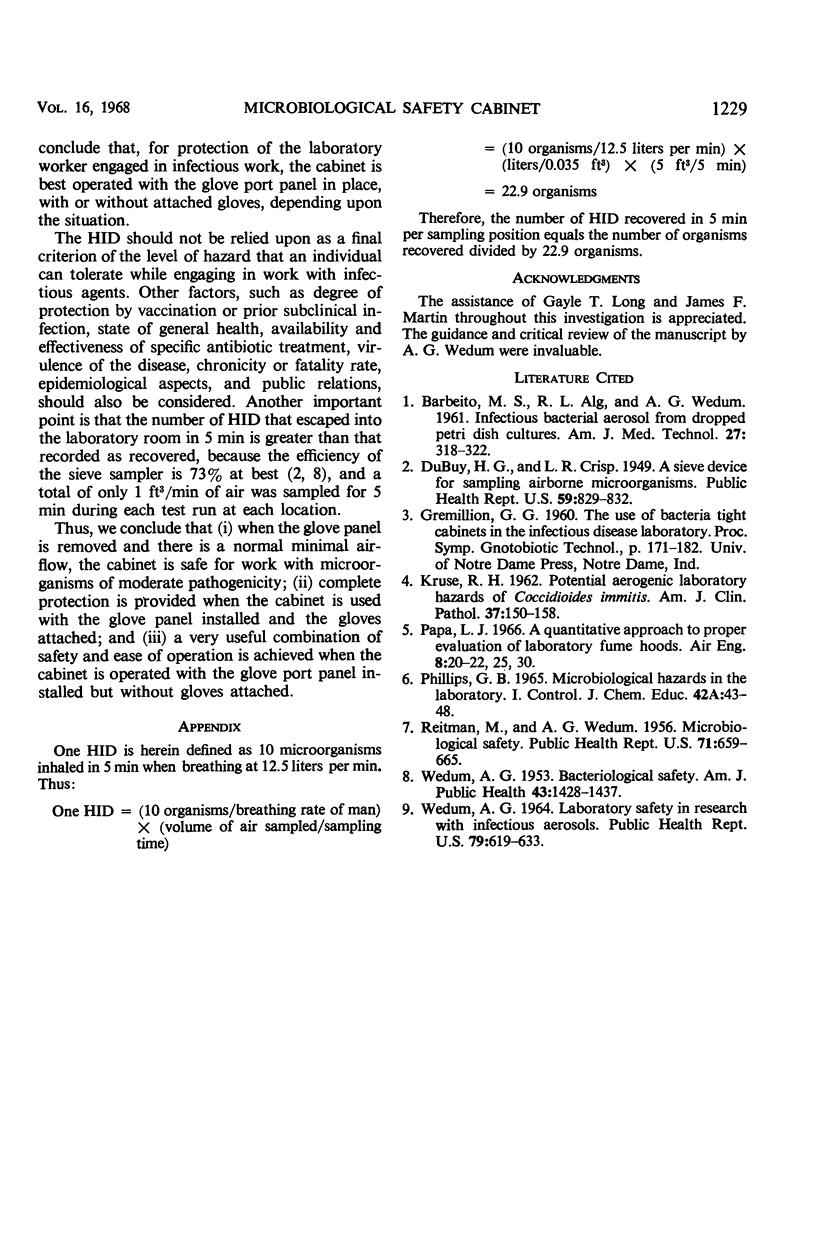
Selected References
These references are in PubMed. This may not be the complete list of references from this article.
- BARBEITO M. S., ALG R. L., WEDUM A. G. Infectious bacterial aerosol from dropped Petri dish cultures. Am J Med Technol. 1961 Nov-Dec;27:318–322. [PubMed] [Google Scholar]
- KRUSE R. H. Potential aerogenic laboratory hazards of Cocidioides immitis. Am J Clin Pathol. 1962 Feb;37:150–158. doi: 10.1093/ajcp/37.2.150. [DOI] [PubMed] [Google Scholar]
- REITMAN M., WEDUM A. G. Microbiological safety. Public Health Rep. 1956 Jul;71(7):659–665. [PMC free article] [PubMed] [Google Scholar]
- WEDUM A. G. Bacteriological safety. Am J Public Health Nations Health. 1953 Nov;43(11):1428–1437. doi: 10.2105/ajph.43.11.1428. [DOI] [PMC free article] [PubMed] [Google Scholar]
- WEDUM A. G. LABORATORY SAFETY IN RESEARCH WITH INFECTIOUS AEROSOLS. Public Health Rep. 1964 Jul;79:619–633. [PMC free article] [PubMed] [Google Scholar]


